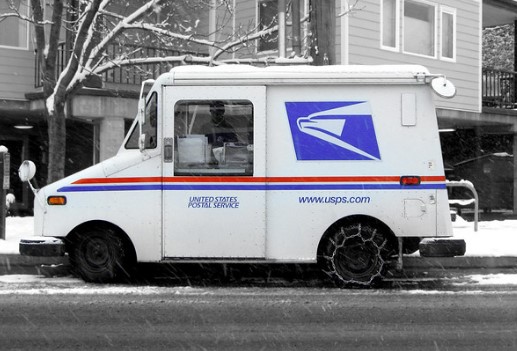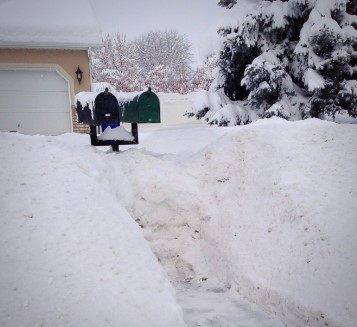If you reside in the US, the USPS has probably come in handy for you, more than once. Due to its state owned status, having packages or mail items sent to you, can be done in a very cheap (and usually,) very reliable manner. Depending on the age demographic, some people tend to rely on the USPS to deliver medications and other essential needs that other shippers would not handle. Overall, and due to the fact that it has a responsibility to cover all zip codes in the US (including rural areas,) it is a delivery service that everyone will find very useful more than once in their lifetime.
As of recently (past decade,) a lot of turmoil has caused a lot of debate on the future of the USPS. Every 4 years, there is always that question of whether it is something that should be privatized, or remain a state owned entity. We will not be diving into those details in this article, but rather giving a small history overview of the famous motto, that is so dear to many of us (especially the older ones among us.)

Neither Rain Nor Snow – A USPS Creed?
It is actually rather interesting, but the USPS does not have an official creed, or slogan. It is more of an informal motto, than something that was scripted and used as a marketing tool on behalf of the USPS. Having said that, the USPS does take ownership of this as an “unofficial” motto and carries it proudly. It all started in 1914 when this phrase was added as an inscription on New York City’s General Post Office Building. This inscription was added by an architect by the name of William M. Kendall, from the firm McKim, Mead & White.
Origin Of Neither Rain Nor Snow
This phrase has its origins from a translation of Herodotus’ Histories when making reference to the courier service that existed during the Persian Empire. Angarium, the term used for the institution of the royal mounted couriers in ancient Persia, was composed of riders (messengers) who would use the networks between Susa and Sardis (a nine day journey) to deliver a message on behalf of the king of Persia. King Darius was the one who perfected it half a century later.
The quote from the translation of Herodotus reads as follows:
“Now there is nothing mortal which accomplishes a journey with more speed than these messengers, so skillfully has this been invented by the Persians: for they say that according to the number of days of which the entire journey consists, so many horses and men are set at intervals, each man and horse appointed for a day’s journey. These neither snow nor rain nor heat nor darkness of night prevents from accomplishing each one the task proposed to him, with the very utmost speed. The first then rides and delivers the message with which he is charged to the second, and the second to the third; and after that it goes through them handed from one to the other, as in the torch-race among the Hellenes, which they perform for Hephaestus. This kind of running of their horses the Persians call Angarium.”
The Mission of the Postal Service
The United States Postal Service is an independent establishment of the executive branch of the government. The mission statement, which is known as the Postal Reorganization Act reads as follows:
“The Postal Service shall have as its basic function the obligation to provide postal services to bind the Nation together through the personal, educational, literary, and business correspondence of the people. It shall provide prompt, reliable, and efficient services to patrons in all areas and shall render postal services to all communities.”
A Lesser Known Inscription
The Post Office building (today, the Smithsonian Institution’s National Postal Museum) has another inscription that is not as known as the famous “Neither Rain Nor Snow”, which is a poem from Dr. Charles W. Eliot, former president of Harvard University.
It reads as follows:
Messenger of Sympathy and Love
Servant of Parted Friends
Consoler of the Lonely
Bond of the Scattered Family
Enlarger of the Common Life
Carrier of News and Knowledge
Instrument of Trade and Industry
Promoter of Mutual Acquaintance
Of Peace and of Goodwill Among Men and Nations.
This inscription, was called “The Letter” with a small change made to it by President Woodrow Wilson before the inscription was carved.

National Neither Snow Nor Rain Day
This day on September 7th, commemorates the opening of the New York Post Office on September 7th 1914. The building, also known as the James A. Farley Post Office Building is the main post office in New York City. Although it started being operational in 1914, it was originally built in 1912.
James. A Farley was Postmaster General from 1933-1940, during a very tough time in US history and the history of the USPS. The Great Depression had impacted a lot of jobs, and therefore USPS revenues had dropped significantly. Under Farley’s direction and by participating in the “New Deal”, the USPS quickly saw its revenues and real estate growing.
The building was named after Farley, as a tribute to his political career as 53rd Postmaster General.
Summary
The USPS has been around for quite some time, with many hundreds of thousands of employees and Postmaster Generals having gone by. There is no official creed of the USPS, however there are certain parts connected to USPS history, that have remained as “sayings” or quotes that are often heard and repeated by the public.
The most famous quote, an inscription that can be found at the New York Post Office, is one that is often times referenced, when speaking to the tireless postal workers of the Post Office. Indeed, no matter the harsh weather conditions or the state of political matters, you can always expect to receive mail in a reliable and timely manner.
If you find a USPS worker today, take a minute and thank them for their hard work.







